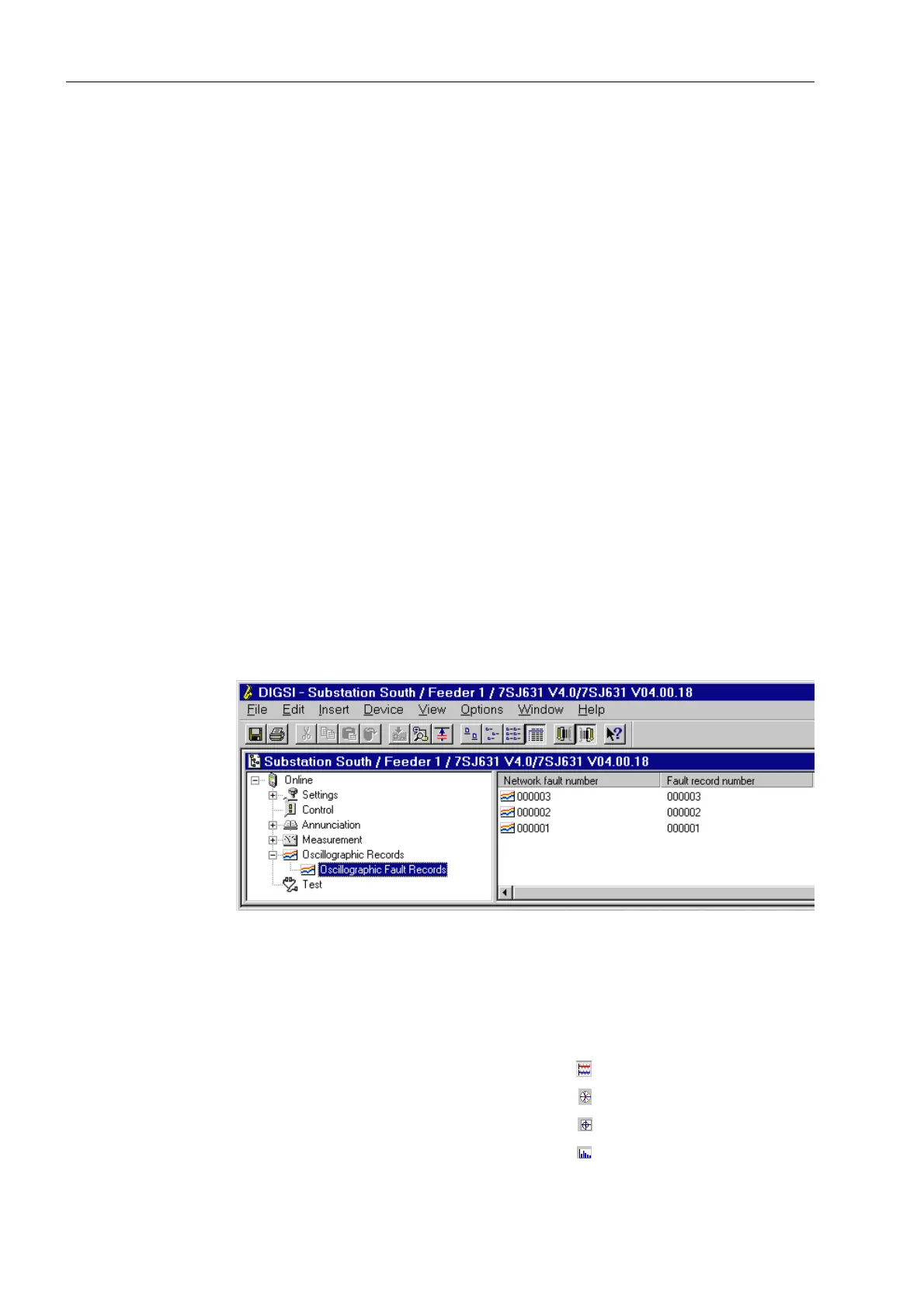Control During Operation
7-26 7SA6 Manual
C53000-G1176-C133-1
7.1.4 Fault Records
Waveform data is stored in the device and can be graphically represented on a
personal computer using DIGSI
®
4, together with the graphic program DIGRA
®
4. The
settings associated with fault recording — such as duration and pre- and post-trigger
times — were set according to Chapter 6.
7.1.4.1 Viewing Fault Records
From PC with
DIGSI
®
4
To view the fault recording data on a screen, one of the programs SIGRA
®
4 or
Comtrade Viewer (included with SIMATIC Manager) is needed. Do the following:
Double click on 2VFLOORJUDSKLF5HFRUGV (Figure 7-2) to view the folder
2VFLOORJUDSKLF)DXOW5HFRUGV. The folders listed in the right window show an
overview of oscillographic records. The records are identified with a network fault
number, a fault record number, and the date and time.
One single line fault can generate one oscillographic record or more than one. The
oscillographic records are numbered.
By double clicking on an fault record in the list view in the right side of the window, one
of the above programs is opened, and the selected waveform data are loaded. (See
also DIGSI
®
4, Operating Handbook, order no. E50417–H1176–C097, Sub-section
8.3.3).
Figure 7-26 Retrieval of fault records in DIGSI
®
4 – example
SIGRA
®
4 provides support in the analysis of faults in a power system. The program
graphically prepares the data recorded during a fault, and calculates additional
measured quantities, such as impedances or rms values.
The quantities can be represented in these views:
• Time signals
• Vector diagrams
• Circle diagrams
• Harmonics
:

